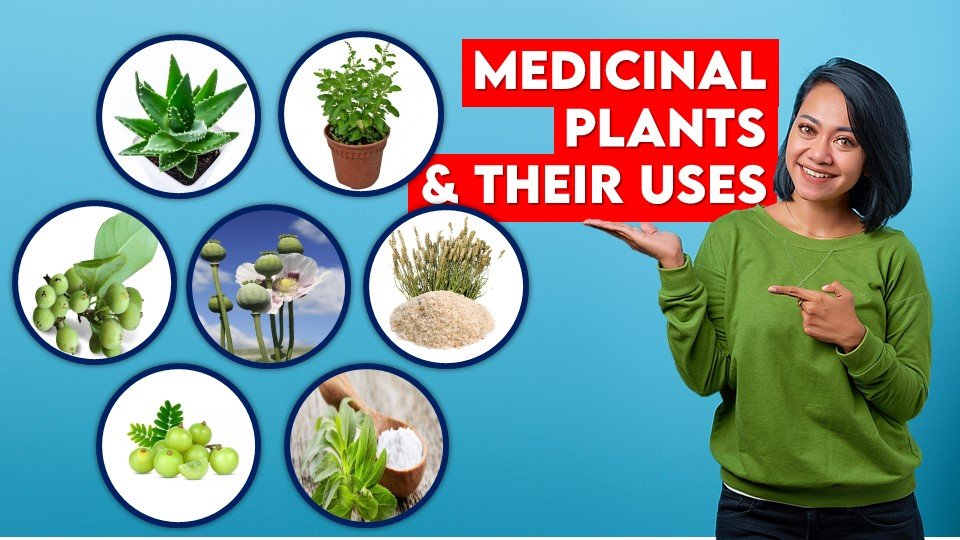Hey everyone! Let us make this day special. We have curated a list of the Top 15 Medicinal Plants and their uses to remind you to look closely at your diets and check whether any of these plants has a part in it or not. If you have, well, congratulations. For those of you who do not, Don’t worry, you still have ample time. So, let’s not waste our time.
What is Medicinal Plant?
As the term suggests, Medicinal plants are those used for medicinal purposes. This is the simplest definition there is. But let’s be more technical. The textbook definition of medicinal plants is
Medicinal plants are those rich in secondary metabolites and potential drug sources. The secondary metabolites are alkaloids, glycosides, coumarins, flavonoids, steroids, etc.
If you don’t get it, just ignore it. It only matters to you if you are a science student whose exams are around the corner.
Scope and Importance of Medicinal Plants
We need to understand the importance of medicinal plants to understand why this article entitled ‘Top 15 medicinal plants and their uses’ will benefit you. The scope and importance are as follows.
- Medicinal plants are in sync with nature. Due to this, medicinal plants have no or minimum side effects and the treatments are independent of any age group or sex.
- These plants have been used for centuries by saints and scholars and have been mentioned in Vedas and Puranas. It has gained the trust and has given Ayurveda, Siddha, and Unani methods global recognition.
- Aloe, Tulsi, Ginger, Turmeric, etc. are a source of immediate medicines for us and are used for curing common ailments. Recipes are prepared using medicinal plants to cure common ailments like diarrhea, constipation, hypertension, low sperm count, dysentery, weak penile erection, coated tongue, menstrual disorders, and fevers. So, they are considered home remedies in many parts of the country.
- Medicinal plants produce secondary metabolites that companies extract to produce pharmaceutical drugs.
- Medicinal plants are important sources of nutrients and as a result, they are recommended for their therapeutic values. Examples are Ginger, Green tea, Aloe, Pepper, and Turmeric.
- Apart from medicinal uses, herbs are used in natural dye, pest control, food, perfume, tea, and many more.
As we have understood the definition and importance of medicinal plants, let’s look at the top medicinal plants and their uses in detail.
Also Read
- Top 10 Exotic Breeds of Cattle: Breeds & Characteristics
- Top 25 Shrubs Plants in India for a picturesque garden
Top 15 Medicinal Plants and Their Uses | Top Medicinal Plants in India
1. Ocimum (Tulsi)
Scientific name: Ocimum sanctum
Tulsi is the go-to herb for mild fever, headache, or other simple ailments. You can just collect the leaves, wash them, extract their juice which has medicinal qualities, and drink it. Continue this multiple times and your fever would have assuaged.
Tulsi is an erect, herbaceous, branched, softly hairy plant. The essential oil components are Eugenol and Eugenol methyl ether which are anticancer.
Tulsi is mainly of two types
- Sri Tulsi: having green leaves.
- Krishna Tulsi: having purple leaves.
Cultivation Practices
| Soil | Well-drained loamy to poor laterite |
| Climate | High rainfall with humid conditions. Long days and high temperatures are favored for good growth. |
| Spacing | 40 x 40 cm/ 40 x 50 cm/ 50 x 30 cm |
| Fertilizer | 120 kg N/ha or 60 kg P/ha |
| Yield | 5 t/ha twice or thrice a year. Oil yield 10 to 23 kg/ha |
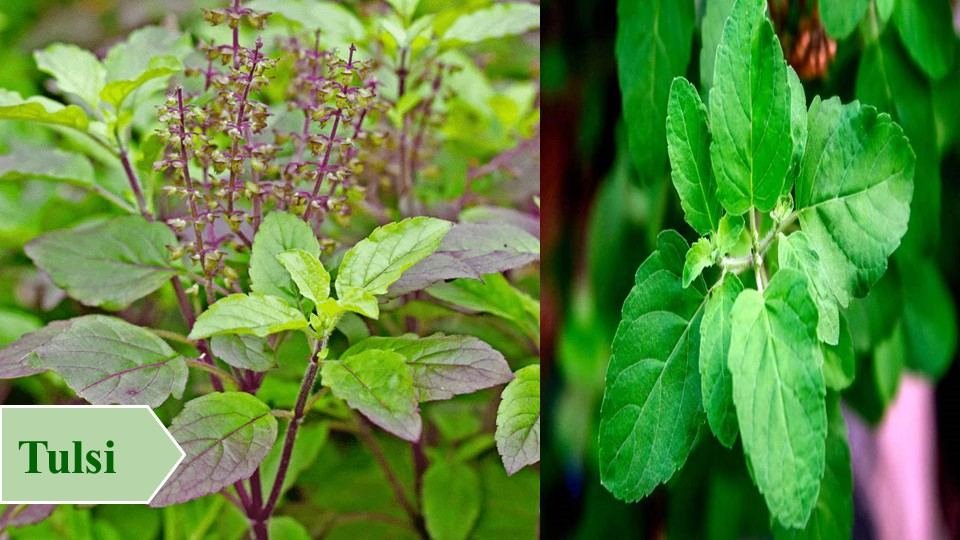
Uses of Tulsi
- Tulsi is a natural immunity booster due to Vitamin C and Zinc.
- The presence of essential oil components Eugenol and Eugenol methyl ether instills anti-cancerous properties in the herb.
- Stress-reducing agent
- The anti-oxidant properties lower blood pressure, reduce hypertension, and enhance heart health.
2. Aloe
Scientific name: Aloe barbadensis and Aloe vera
Aloe is a shallow-rooted perennial herb. The plant does not have a true stem with multiple tuberous roots, instead they produce bloom stalks. The plant grows to 60 cm in height.
The green fleshy leaves form rosette shape close to the ground. The green, thick, fleshy leaves have a strong cuticularized coating with a spiny margin. The flowers are yellow to orange colored and arranged in axillary spikes. The ovary is superior and trilocular with axile placentation.
Cultivation Practices
| Soil | Sandy coastal and loamy soils. |
| Climate | Warm humid dry climate with 150-200 cm yearly rainfall |
| Spacing | 75 x 60 cm |
| Fertilizer | Farm Yard Manure (FYM) at 10 tons/acre and Vermicompost at 1 ton/acre |
| Yield | Fresh weight 10,000 to 12000 kg/ha |
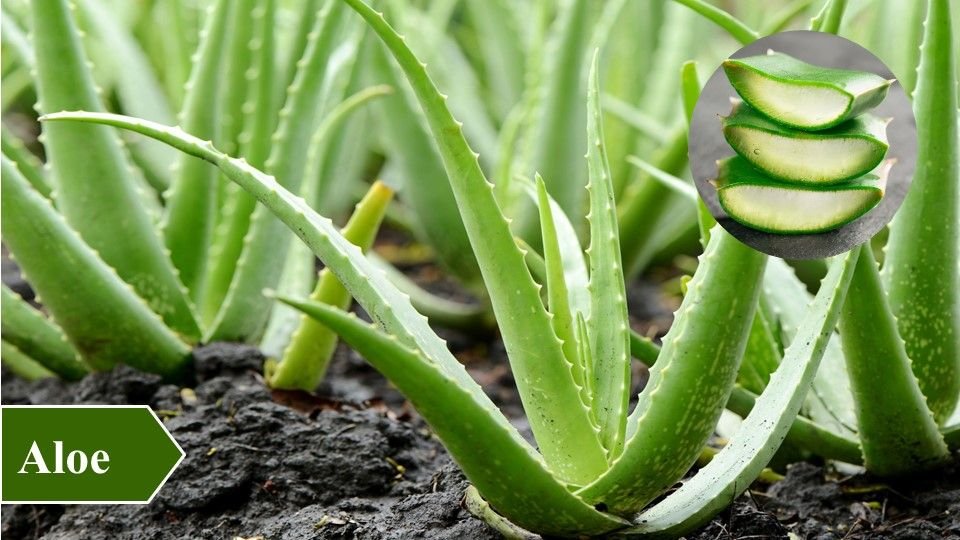
Uses
- Yellow bitter juice consisting of aloin and gel consisting of polysaccharides are extracted.
- Used in flavoring liquors
- Used in preparations of anti-obesity mixtures
- Moisturizer, emollient, or wound healer in cosmetics and pharmaceutical formulations.
3. Poppy
Scientific name: Papaver somniferum
Poppy also known as Opium Poppy is an annual herb belonging to the family Papaveraceae. The plant grows to 60-120 cm in height and contains over 40 alkaloids including psychoactive agents which are used in the treatment of mental and nervous diseases.
Cultivation Practices
| Soil | Well-drained, fertile, light black or loam soil. |
| Climate | Temperate climates are favored, but can also be grown in the winter season in sub-tropical regions. |
| Spacing | 30 x 30 cm |
| Fertilizer | Farm Yard Manure (FYM) at 20-30 tons/ha. 60-80 kg N and 40-50 kg P per hectare is applied. |
| Yield | Raw Opium yield is 50 to 60 kg per hectare. |
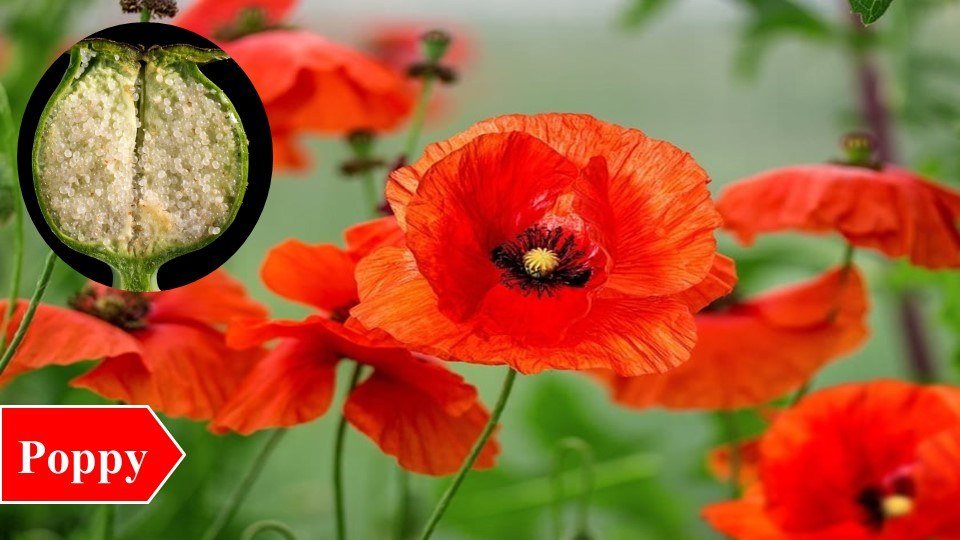
Uses
- The psychoactive agents in the plants are used as medicines that help reduce mental and nervous diseases.
4. Ashwagandha
Scientific name: Withania sominifera
Withanin and Sominiferin are the major alkaloids present. Ashwagandha is an integral part of Siddha and Unani medicines. The term ‘Ashwa’ means Horse and ‘gandha’ means smell so Ashwagandha means smells like a horse which describes the special aroma of its roots.
Cultivation Practices
| Soil | Sandy loam or light-red soil. |
| Climate | Sub-tropical climate with dry weather. |
| Spacing | 60 x 60 cm |
| Fertilizer | Does not require heavy doses of fertilizers or manures. |
| Yield | 300-500 kg/ha dry roots and 50-75 kg/ha seeds. |
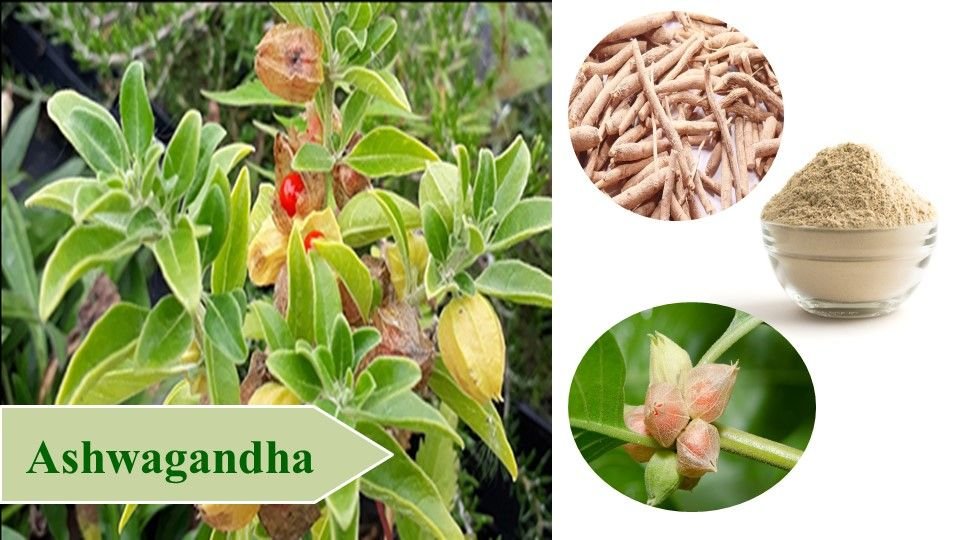
Uses
- Withaferin A contains antitumor properties and is used for curing carbuncles in indigenous medicine.
- Paste from roots, fruit is used for treating bronchitis, skin diseases, and ulcers.
- It is used as an aphrodisiac, remunerative tonic, Diuretic, Hypnotic, Sedative, and restorative, and useful in rheumatism, cough debility from old age, dropsy, and general weakness.
- Paste produced from leaves is used for curing inflammation of tubercular glands.
5. Periwinkle
Scientific name: Catharanthus roseus
A perennial ornamental herb found throughout India on wastelands and sandy tracts. This plant has been mentioned in ancient literature as old as 2nd BC.
The medicinal importance is due to the presence of raubasin and serpentine found in its root.
Cultivation Practices
| Soil | Sandy loam or light-red soil. |
| Climate | Sub-tropical climate with dry weather. |
| Spacing | 60 x 60 cm |
| Fertilizer | Does not require heavy doses of fertilizers or manures. |
| Yield | 300-500 kg/ha dry roots and 50-75 kg/ha seeds. |
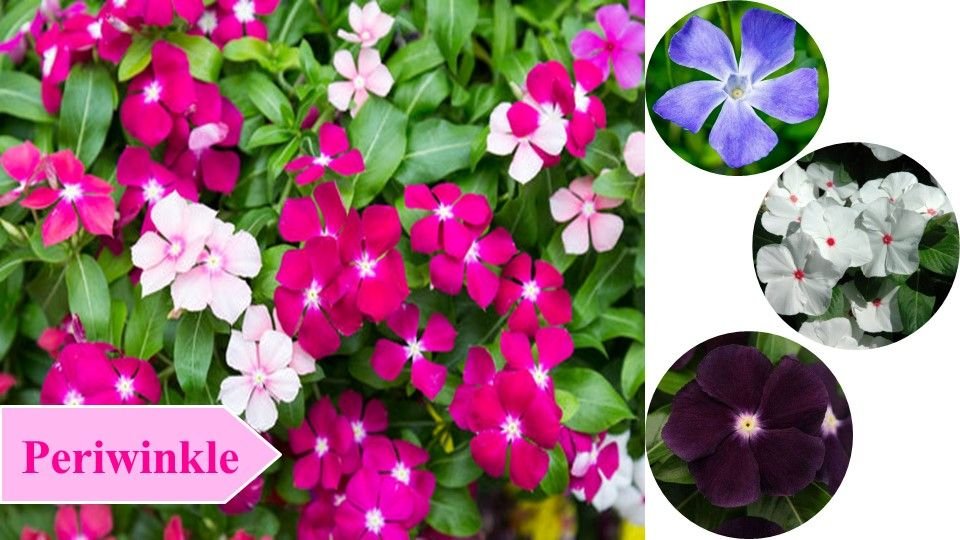
Uses
- The plant contains alkaloids like raubasin and serpentine are used for their hypertensive and antispasmodic properties.
- The leaves contain vincristine and vinblastine which are used in cancer therapy.
- Vinblastine sulfate, under the brand name VELBE, is used to cure Hodgkin’s disease.
6. Isabgol (Plantago)
Scientific name: Plantago ovata
Isabgol or Psyllium is important for its plant and husk which has been used in indigenous medicine for centuries. It is a stemless annual herb that attains a height of 30-40cm and has rosette leaves. The fruit is a capsule and each seed is encased in a white translucent membrane, the husk is odorless and tasteless.
Cultivation Practices
| Soil | Well-drained sandy loam. |
| Climate | Cool and dry weather is required. |
| Spacing | Sown in rows with 15cm spacing. |
| Fertilizer | 50:25:30 NPK kg/ha |
| Yield | An average yield of 110 seeds/ha. |
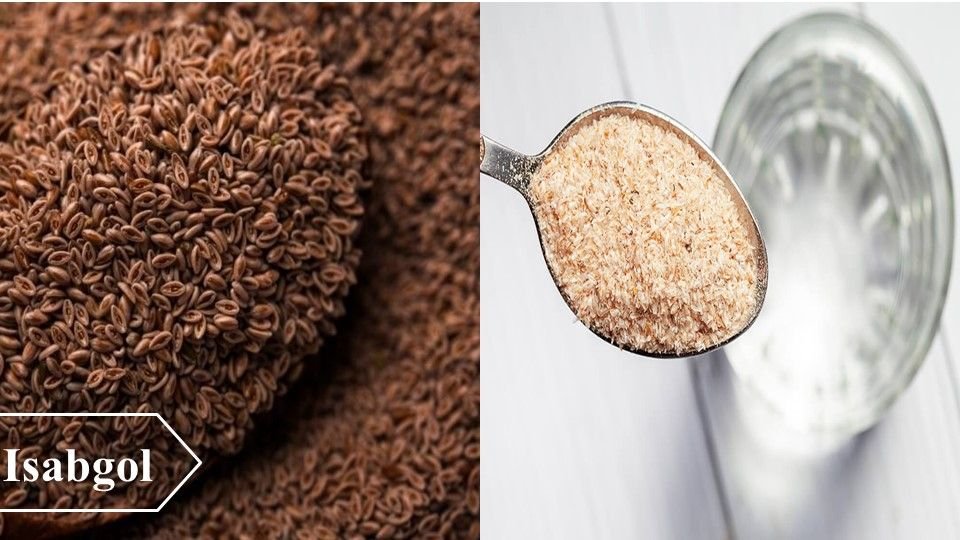
Uses
- The husk of the seed has the property of absorbing water and is hence used as an anti-diarrhea drug.
- Used to treat chronic amoebic dysentery.
Also Read:
- 15 Indoor Plants for Winter and How to Care for Them
- Amazing 10 Plants that Grow from Leaves for the Leafy Garden
7. Senna
Scientific name: Cassia angustifolia
India is the biggest producer and exporter of Senna in the world. Almost all the leaves produced in India are exported to foreign countries and the major chunk goes to London (United Kingdom). Major production occurs in Gujarat, Rajasthan, Maharashtra, and Tamil Nadu.
Senna is an erect shrub reaching about 75 cm in height. The leaves are pinnate and the leaflets are glabrous. The special compound in the plant is called sennosides and is present in the maximum concentration in the leaves and pods.
Cultivation Practices
| Soil | Sandy loam soil |
| Climate | All-round warm and dry weather conditions. |
| Spacing | 30 x 30 cm |
| Fertilizer | FYM – 25 tonnes along with 50:25:40 kg NPK/ha. |
| Yield | 1500 kg/ha of dry leaves and 700 kg/ha of pods. |
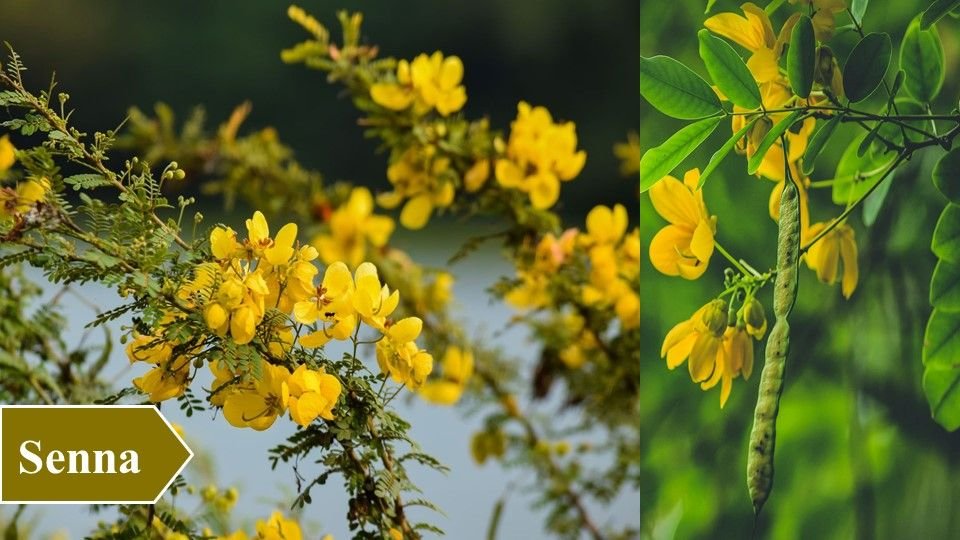
Uses
- It is the most reliable and least harmful laxative agent.
- It is used along with herbal tea in European countries.
8. Glory Lily (Gloriosa)
Scientific name: Gloriosa superba
Glory lily belongs to the family Colchicaceae. Its tubers are reported to have been used to cure snake bites and scorpion bites. The medicinal properties of the plant are due to the presence of alkaloids colchicine and gloriosine along with others.
The plant originated in tropical Asia and Africa. The word Gloriosa is of Latin origin and refers to flowers.
Cultivation Practices
| Soil | Sandy loam with good drainage. |
| Climate | Tropical climates with warm, humid regions. |
| Spacing | 30 x 45 cm |
| Fertilizer | 120:60:75 NPK kg/ha. |
| Yield | 500 kg dry seed/ha. |
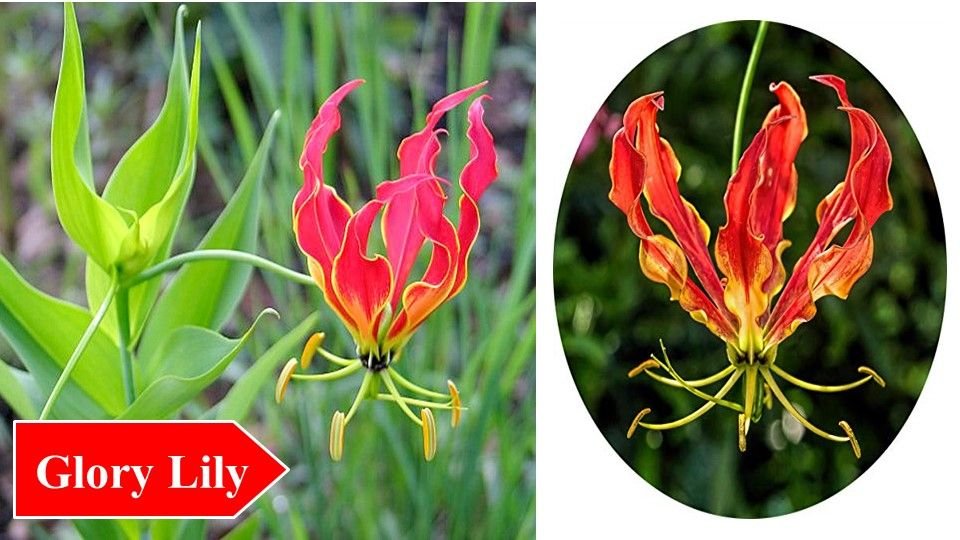
Uses
- The tubers of the plant are, antiperiodic, antihelminthic, and against snake bites and scorpion stings.
- Used for promoting labor pains.
- Useful in cases of chronic ulcers, piles, and gonorrhea.
- Leaves are extracted and applied in the form of a paste to the neck and forehead of children to cure asthma.
9. Rauvolfia
Scientific name: Rauvolfia serpentine
Rauvolfia, popularly known as Sarpagandha, is an important medicinal plant in India belonging to the family Apocynaceae. The roots of the plants have immense importance and have been mentioned in Ayurvedic texts 3000 years back. However, its importance in modern Allopathic medicine was discovered in 1952, when an alkaloid Reserpine was isolated from the roots of the plant.
Cultivation Practices
| Soil | Well-drained fertile soils and clay loam soils rich in organic matter are the best soils. |
| Climate | Flourishes in hot and humid tropical areas |
| Spacing | 60 x 30 cm |
| Fertilizer | 40:30:30 NPK kg/ha |
| Yield | The yield for seedling plantations is 1000-1200 kg roots per hectare. |
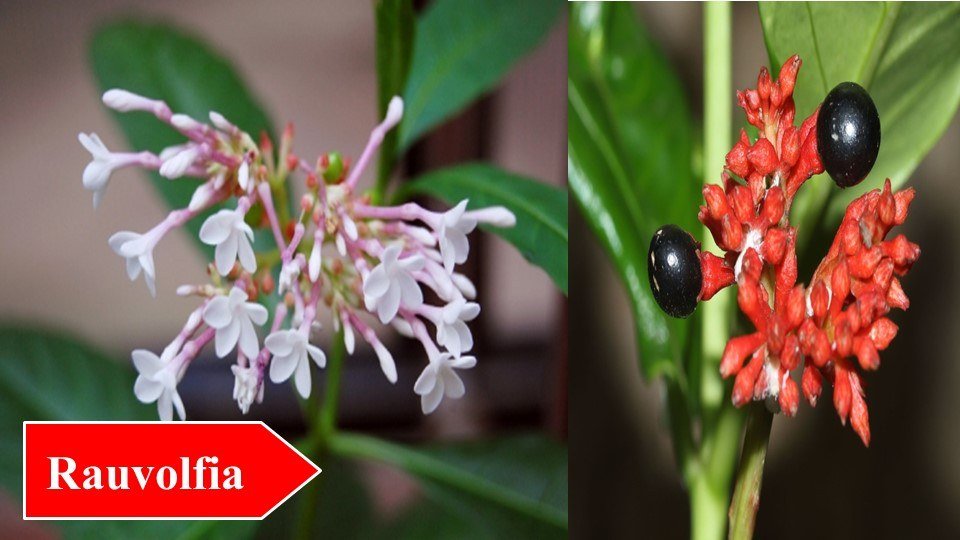
Uses
- The roots are an integral part of Ayurvedic and Unani medicines in India
- Used to treat disorders of the central nervous system like maniacal behavior, insanity, schizophrenia, etc.
10. Solanum
Scientific name: Solanum Khasianum
The genus Solanum consists of 2000 species of plants which can broadly be grouped as tuberous and non-tuberous plants. It is a stout, highly branched shrub varying in height from 0.75 to 1.40 m. The stem is spiny. Leaves are ovate, lobed, and prickly on both the surface.
Cultivation Practices
| Soil | Well-drained lateritic soils. |
| Climate | Sub-tropical to sub-temperate climates |
| Spacing | 50 x 50 cm |
| Fertilizer | 100:60:40 NPK kg/ha |
| Yield | Fresh berries – 10t/ha and Dry berries – 2t/ha. |
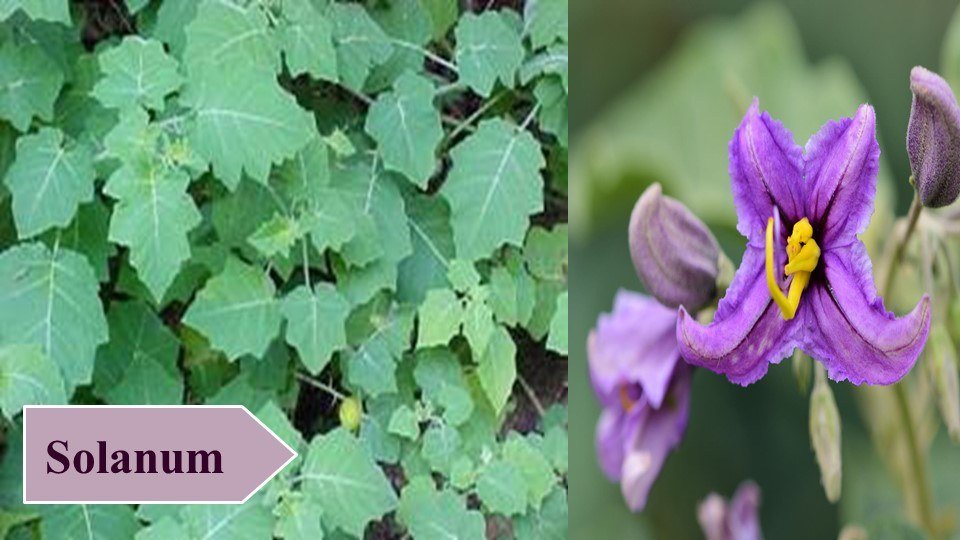
Uses
- Solasodine obtained from the plants is used as a substitute for diosgenine in the synthesis of steroidal hormones.
- Manufacturing oral contraceptive tablets.
Till now we have looked at the top 10 medicinal plants and their uses. But we are going to explain 5 more as a bonus for you.
11. Dioscorea
Scientific name: Dioscorea floribunda
Also known as Medicinal yams, they belong to the Dioscoreaceae family. Yam tubers contain a variety of substances including carbohydrates, protein, alkaloids, and tannins, the most important constituent is sapogenins. The sapogenins in Dioscorea are diosgenin, yamogenin, botogenin, and kryptogenin. The varieties D.alata and D.esculenta are used for their tubers.
Cultivation Practices
| Soil | Wide range of soils except for heavy soils |
| Climate | Tropical, subtropical, and temperate climates. |
| Spacing | 60 x 45 cm |
| Fertilizer | 300:150:150 NPK kg/ha |
| Yield | 5-8 tonnes of dry tubers per hectare |
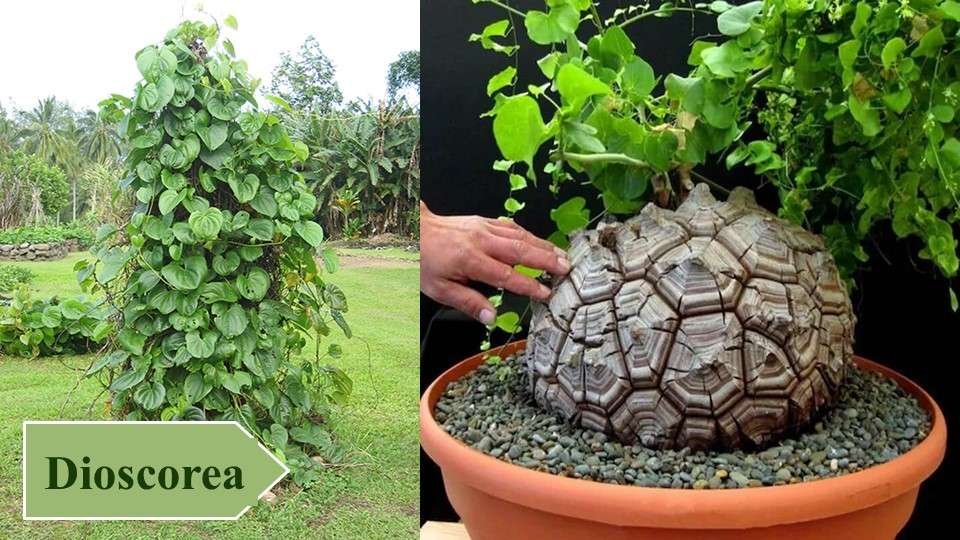
Uses
- Diosgenin is used as a starting material in the preparation of steroids
- In the preparation of oral contraceptives
- Used for their edible tubers
12. Stevia
Scientific name: Stevia rebaudiana
Stevia is a sweet, perennial, short-day plant that grows to a height of 45 cm. The leaves are mid-green and intensively sweet. The leaves contain the compounds sterioside and rebaudioside which are 200 times sweeter than sugar.
Cultivation Practices
| Soil | Red sandy loam soils |
| Climate | Sub-tropical climate |
| Spacing | 20 x 30 cm |
| Fertilizer | 110:45:45 NPK kg/ha |
| Yield | 3000 kg leaves per acre |
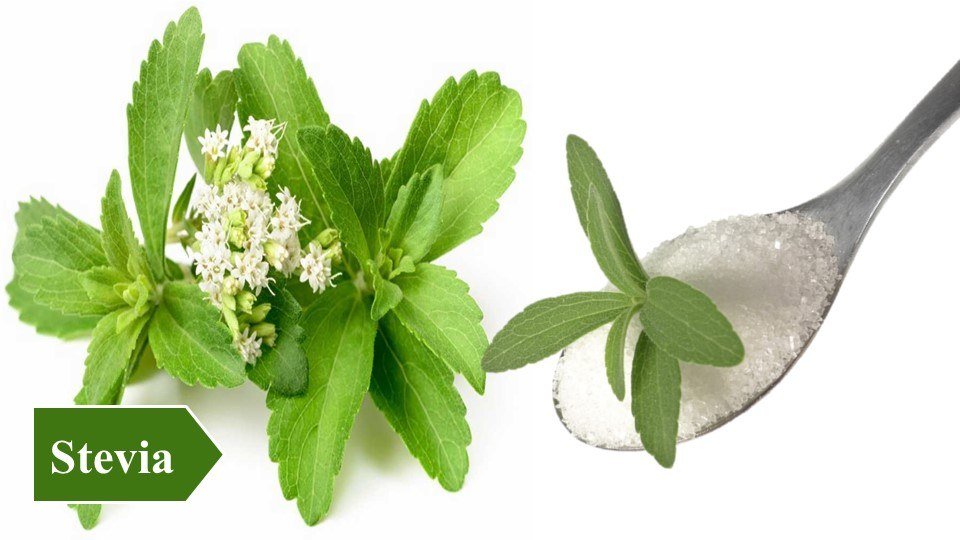
Uses
- A healthy alternative to sugar and hence used in diabetic tonics.
13. Nuxvomica
Scientific name: Strychmus nuxvomica
Also known as Poison nut or Snakewood. The seeds are hard and circular structures that have a different taste.
Cultivation Practices
| Soil | Clayey-loam soil |
| Climate | Found in monsoon forests and shade-bearing evergreen forests. |
| Pit size | 50 ㎤ |
| Fertilizer | FYM at 10 t/ha and 50:30:30 NPK kg/ha |
| Yield | 4-5 q seeds/ha |
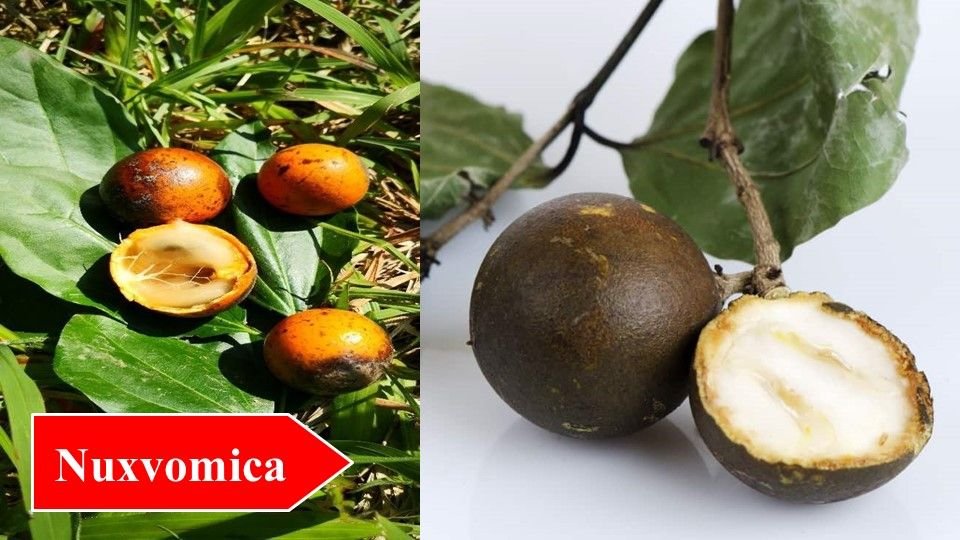
Uses
- Treatment of nervous disorders and paralysis in minute dosages.
- Used in the extermination of pests.
14. Guggal
Scientific name: Commiphora mukul
Guggal or Indian Bedellum is a small tree that grows 3-4 feet high. The branches are crooked and knotty. The bark is soft and papery.
Cultivation Practices
| Soil | Sandy-loam soils. |
| Climate | Warm dry climate |
| Spacing | Pits at 3-4 m spacing |
| Fertilizer | 20-50g Urea or Ammonium sulfate |
| Yield | 700 -900 g/plant resin |
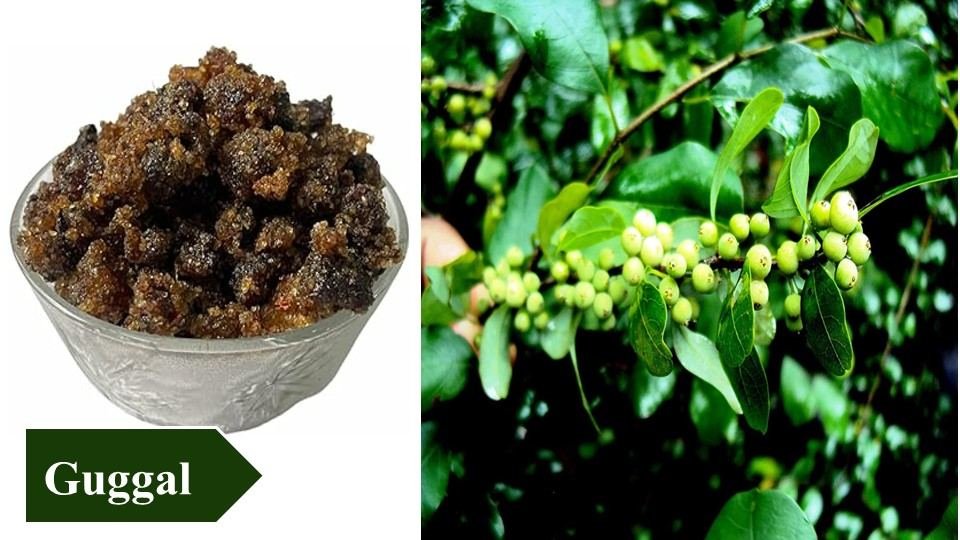
Uses
- Used as a fixative in perfumes and medicines
Also Read :
- Top 15 Best Farming Business Ideas for Impressive Profits
- Top 10 Exotic Breeds of Cattle: Breeds & Characteristics
15. Aonla
Belonging to the Euphorbeaceae family, Aonla is rich in Vitamin C. The fruit contains gallic acid, allagic acid, and glucose which retards oxidation of vitamin C.
Cultivation Practices
| Soil | sandy-loam soils. |
| Climate | Sub-tropical climates |
| Spacing | 10 x 10 m |
| Yield | 60-70 kg of fruits per tree. |
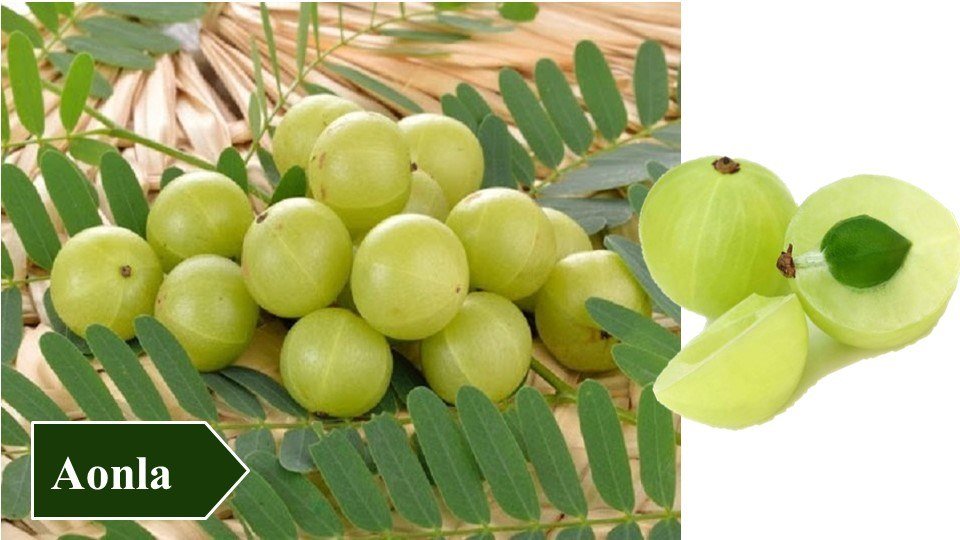
Uses
- Fruits are useful in hemorrhages, dysentery, anemia, jaundice, dyspepsia, and cough.
- Important in Triphala and Chavanaprash and a great health vitality restorer.
Also Watch
Wrap-up
In this article on the top 15 medicinal plants and their uses, we have presented short but informative and crucial points on 10 of the best medicinal plants. In the contemporary world where even medicines can be harmful, reverting to Ayurvedic and traditional medicinal knowledge will be extremely beneficial for both us and the environment.
Latest Post
- Sahiwal Cow: Characteristics, Milk per Day, Price and Origin
- July 2025 : Times of Agriculture Magazine
- June Issue (2025) – Times of Agriculture Magazine
- How to Create Modern Commercial Greenhouse Agriculture
- REACH NEW HEIGHTS WITH YOUR BUSINESS AT VIETSTOCK EXPO & FORUM 2025
- Revamping Waste: A wish list This World Environment Day
- Types of Banana in India : Health & wallet friendly fruit
- May Issue (2025): Times of Agriculture
- How to Grow Oyster Mushrooms at Home in India

